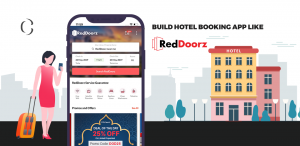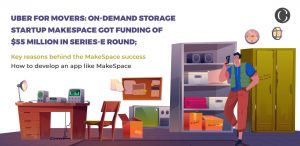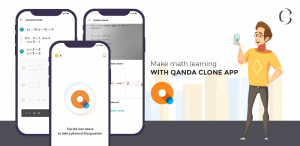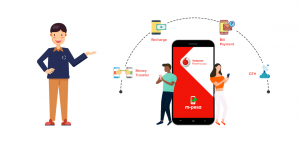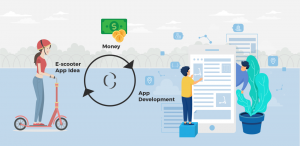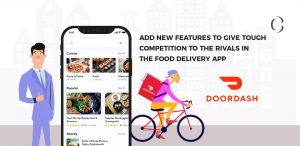Top 5 technology trends that will transform retail in post-corona: Why brick-and-click is the future of retail

“There are decades where nothing happens, and there are weeks when decades happen.” – Vladimir Lenin
This thought of Marxist revolutionary Lenin best describes the current situation. Coronavirus has started out as a health pandemic, but now it has an everlasting impact on every aspect of our life, be it social, financial, or political.
Earlier this week, U.S. President Donald Trump described the coronavirus pandemic as the worst attack the US has ever endured, even worse than Pearl Harbor or 9/11.
The scare of covid-19 and lockdown on business and commerce will last well into the 2020s. Nearly half a million businesses have shut down permanently in the first quarter alone in China due to the pandemic. 54% of small businesses in the U.S. have closed down temporarily.
Businesses across all industries are adopting digitization more than ever before, to make it through the pandemic. Once again, AR/VR is stealing the spotlight.
Here is how businesses are using digitization to drive through the pandemic:
- After training approx 14,000 medical professionals in the USA, AR/VR startup Virti is launching programs for 15,000 NHS health workers to help them deal with increasing cases of coronavirus. The platform transports users into high-pressure environments to prepare them for anxiety-inducing settings, and improve their performance in it.
- In the UK, software company PTC is using Microsoft’s HoloLens to avail training content in factories, so producers can fast-track the learning process to build ventilators for the NHS. PTC also offers a program, named Vuforia Expert Capture that lets experts record each task they carry out through a wearable device, and then make a step-by-step procedure video with voice instructions so other workers can easily follow that using AR-headset.
- A VR storytelling company, Vivida is designing interactive scenarios on cybersecurity awareness to educate people about it, as organizations have moved to remote-working tools.
- Art Basel virtually launched online viewing rooms for the opening of Art Basel in Hong Kong, where more than 2,000 works were available.
Retail is no exception to this transformation:
- IKEA and Wayfair are using AR for furniture and home goods retailing, and let customers place and manipulate catalog items at scale in their homes.
- ASOS is a general merchandise retailer in the UK, uses AR to show people how the clothing will look on different body types, to help consumers get a perfect fit.
- Ubiquity6 is another AR startup that lets you co-create digital in real-time by layering AR objects over a physical space.
So, let’s have a look at the top 5 technologies that will entirely transform post-corona retail trends:
Extended reality:
From browsing products to virtually try them on, the virtual and augmented reality offers retailers several ways to improve the customer experience. It is already popular among many retailers.
IKEA has launched the ARKit app that helps you determine the furniture you want to purchase will fit and look good in your home. In the future, extended reality may enable consumers to be able to share their AR shopping experiences with others.
(Source: IKEA)
Virtual reality provides a very stimulating shopping experience. In retail, virtual reality may reduce product returns and marketing costs. Another reason is because of the increasing hype about technology and the sci-fi aspect it brings along, which creates enthusiasm in the consumers.
Volvo Reality app is the best example of using VR in retail marketing and sales. Volvo used Google Cardboard to put up a VR test drive for consumers through their mobile phones. This app takes the person inside an SUV and makes them feel like driving through various landscapes.
Other car companies like Jaguar, Lexus, Ford are also using VR headsets.
(Source: Hackernoon)
Extended reality is a very cool tech to decide which product suits better. Today, in the time of social distancing, this tech encourages people to AR shopping without visiting the store, and in the case of in-store shopping, without physical contact.
Gucci is one of the latest luxury brands that added the AR feature in its application, which enables users to try on sneakers.
Predictive analytics or Big data:
Retail organizations have never had a challenge in data collection, but storing, analyzing, and using the data to solve problems was a bit of a struggle. Predictive analytics helps in it by analyzing consumer behavior and trends from the past.
Large retail companies have thousands of products in their portfolios, and often operate in a different price range and reprice their products frequently. All of this results in massive amounts of data from pricing to logistics.
So, retailers need to collect, structure, clean, and store data in a single format and place before using it. The process may take several weeks, but it is just a one-time process for long-term benefits.
Through predictive analytics, you will be able to understand consumer purchasing behavior, personalize the shopping experience, address their needs based on the customer journey, reduce costs of supply chains, and many more.
Artificial intelligence (AI):
Robotic store assistants like Pepper can help shoppers find the merchandise they are looking for or solve their queries or avail them of special offers or coupons. Home improvement store Lowe’s has the LoweBot for in-store customer service.
AI assistants can handle multiple tasks at a time, including inventory management or store management or both, and that too, with greater efficiency than humans.
(Source: Lowebot)
Messaging-based customer service bots are prominent in retail. Chatbots improve customer service by lowering cart abandonment, answering common queries, and solve the issues after the sale without human intervention.
Chatbots also learn from customer conversations and avail better assistance to customers. People also feel comfortable with the virtual assistant while shopping, as it gives them personalized shopping experience.
Internet of Things (IoT):
IoT and smart equipment will entirely transform the shopping experience. Today, people want personalized shopping experiences. IoT technology helps to deliver these experiences to customers.
IoT has improved all those things that dissatisfy the consumers, such as product availability, batch Id, product expiry dates, etc. IoT sensors also monitor numerous factors such as temperature, which may affect the quality of products. In the case of product shortage, IoT notifies the administration, or in some cases, automatically creates an order.
Amazon uses IoT installed robots for picking, packing, and many other jobs to enhance work efficiency. Amazon uses drones to pick up and deliver products in its warehouses.
Walmart uses IoT for personalized advertisements. IoT recognizes the shopping pattern of the people through browsing that helps retailers to target consumers and to sell their products to them.
(Source: Hackernoon)
Brick and click stores or omnichannel approach:
Modern consumer’s attitude towards both online/offline retail is very complex and ambivalent. For example, Gen Z prefers traditional brick-and-mortar retail, while Millennials and Gen Xers go for digital retail. Customers of all generations are prone to showrooming (meaning checking out the product in-store, then buying it online at a lower price).
This trend also varies according to product types, such as financial services and electronic items most commonly bought online, while consumer goods and clothes bought predominantly in-store.
In the past couple of years, more and more brick-and-mortar retailers have relocated their businesses online, as they believed that e-commerce is getting rapid momentum. But in reality, e-commerce has its flaws, so a transformation from bricks to clicks has not solved retailers’ problems entirely, but instead posed some new challenges.
From bricks to click model has become unsuccessful, the bricks-and-clicks model or omnichannel approach appears as a viable solution for retail in the future. As the line between the present and the future becomes indistinguishable, the boundaries between online and offline blurs.
Bricks-and-clicks model perfectly strikes a balance between the online and offline retail and helps to reap the benefits of both.
Target, Walmart, and Amazon have already adopted the bricks-and-clicks model and experienced positive results so far in terms of traffic and sales.
Apart from bringing online functionalities into the offline world, online customer experience is getting more realistic with the help of AR/VR, enabling consumers not only to see or touch but also to smell and even taste the digital objects.
The current time is perfect for experimenting with different technologies and evaluating results for future benefits. As the present is all about the experience and the future is all about magic.
How we can help you:
Coruscate is a leading software development company, accommodating 150+ talented and experienced developers, designers, and business analysts, which will help you through the entire process of elevating your brick-and-mortar from start to finish.
We have already delivered many compelling brick-and-click solutions across the globe. Our experience in the domain of AR/VR and automation will surely help us to deliver you a robust tech solution.
If you want to have a personalized solution for your business, feel free to contact us anytime. Our experienced team will get back to you with a comprehensive solution, a personalized quote, and a live project demo.



